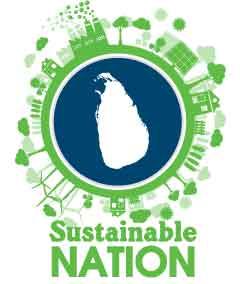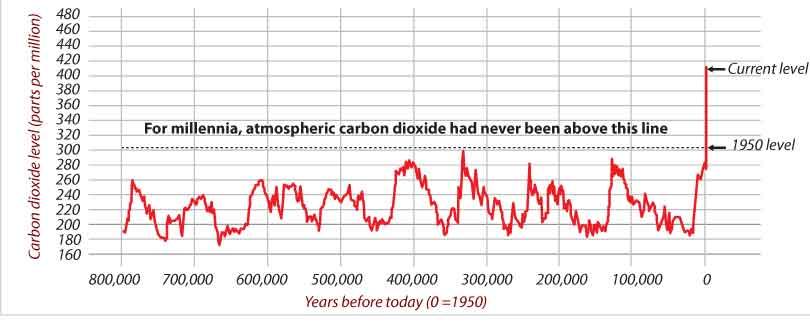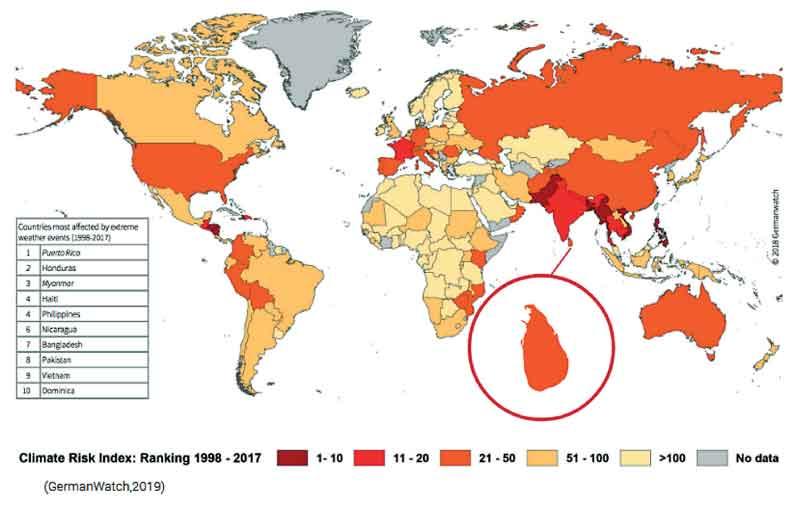12 Dec 2019 - {{hitsCtrl.values.hits}}
 We believe that climate change is one of the greatest threats that we, as Sri Lankans, will face in the future. Therefore, we intend to provide our readers with local and international content with the objective to educate and inspire. We would also like to learn from our valued readers about any ongoing initiatives in making Sri Lanka a more sustainable nation. We aim to explore sustainable ways of living that have the most positive impact on not just our natural environment, but also for humans and animals. While topics such as global warming, pollution, and inequality are confronting, we believe it's time the media stopped shying away from these issues and became an active participant in finding solutions - and we hope you will join us.
We believe that climate change is one of the greatest threats that we, as Sri Lankans, will face in the future. Therefore, we intend to provide our readers with local and international content with the objective to educate and inspire. We would also like to learn from our valued readers about any ongoing initiatives in making Sri Lanka a more sustainable nation. We aim to explore sustainable ways of living that have the most positive impact on not just our natural environment, but also for humans and animals. While topics such as global warming, pollution, and inequality are confronting, we believe it's time the media stopped shying away from these issues and became an active participant in finding solutions - and we hope you will join us.
 Climate-strike is the latest addition to the Collins Dictionary. Witnessing frequent, extreme weather disasters around the world combined with youth generated mass protests demanding immediate action by Governments, uphold climate change as one of the most intriguing topics of 2019 and over the past decade. Disastrous weather events causing national emergencies across the globe have been a constant reminder that our earth screams for help. But, are we really listening? Whilst a small country as Sri Lanka contributes little to climate change, we are by no means exempt from its unpredictable consequences.
Climate-strike is the latest addition to the Collins Dictionary. Witnessing frequent, extreme weather disasters around the world combined with youth generated mass protests demanding immediate action by Governments, uphold climate change as one of the most intriguing topics of 2019 and over the past decade. Disastrous weather events causing national emergencies across the globe have been a constant reminder that our earth screams for help. But, are we really listening? Whilst a small country as Sri Lanka contributes little to climate change, we are by no means exempt from its unpredictable consequences.
In theory, climate change occurs when weather patterns change naturally over a long period of time. However, over the last century, human actions such as the industrial revolution, burning fossil fuels, which release Carbon Dioxide (CO2) in magnitude, deforestation in large scale have accelerated climate change by increasing global temperatures, triggering drastic change in the climate which, all living beings are no longer able to cope with. It has converted from changing of weather patterns indolently to experiencing regular, extreme weather catastrophes, to the extent that it has come to threaten livelihoods, communities and nations socially and economically. Thus, climate change has now become a worldwide crisis.
Increase of Green House Gases (GHG), otherwise known as toxic emissions that trap heat in earth’s atmosphere, cause global temperatures to rise which is one of the most profound causes of climate crisis. While GHGs play a pivotal role in securing the warmth of the sun to keep the earth alive, human actions such as burning coal and oil and thereby releasing volumes of CO2 have caused toxic emissions to be trapped in earth’s atmosphere, increasing global temperatures alarmingly. According to the National Aeronautics and Space Administration (NASA), the levels of CO2 are at its highest in 650,000 years with 412 parts per million. Source- climate.nasa.gov
Deforestation is another leading cause. Natural rainforests act as an air purifier absorbing CO2 and releasing oxygen for all living beings to depend on.
Another contributor is the release of methane, largely through industrial livestock farming.
Exceeding numbers of cattle and sheep produce methane as they digest food. Our demand for fast food directly contributes to expanding livestock farming. Methane from rice cultivation contributes to around 1.5% of total global GHG emissions, as per the World Resources Institute (WRI).

Source- climate.nasa.gov
Staggering population numbers add further to global warming. According to the United Nations Population Fund, human population grew from 1.6 billion to 6.1 billion during the course of the 20th century. More people call means more of everything from energy to farming. Rising temperatures are one of the most severe consequences. This means that countries like Sri Lanka will experience constant heat waves, failing crops, compelling communities in dry regions to search for alternative land, where better resources are available.
As a tropical country, increase of droughts in the dry zone of Sri Lanka will impact its social and economic growth (USAID Report on Sri Lanka’s climate, 2016). In 2012, temperatures in the island topped a record high in three decades in Vavuniya and Polonnaruwa at 40°C. Decrease and change of seasonal rainfall in the already dry zone will affect the livelihood of farmers, compelling low income communities to migrate to new locations looking for better resources, whilst intense rainfall followed by severe floods and landslides in wet zones have displaced many vulnerable communities. The devastating floods in 2017 affected 879,778 people with 219 deaths and 74 missing, as per the UN Report 2017 on Post Disaster Needs Assessment- Sri Lanka.
In 1998 and subsequently 2016, the corals in Bar Reef, Kalpitiya underwent bleaching due to rising sea water temperatures. The rising sea levels can further displace coastal population in Sri Lanka and slow economic growth by impacting tourism and fishing industries. According to Mani et al., 2018, on South Asia’s climate change, 19 million people in Sri Lanka can be affected by the climate crisis by 2050, where hotspots such as Northern Province, Colombo and Gampaha will be the most vulnerable to climate crisis as average weather such as rainfall converts to extreme weather.

Source- Disaster Risk Reduction in Sri Lanka, UNISDR Status Report 2019
In 2016, Sri Lanka signed the Paris Agreement with the United Nations, committing to combat climate change by accelerating actions needed for a sustainable low carbon future. On the contrary, it is still heavily dependent on burning fossil fuels such as coal to generate electricity, increasing its carbon footprint causing irreversible environmental, social and economic damages to its surrounding community. Therefore, as a government, Sri Lanka must invest more in environmentally sustainable methods of producing electricity using solar and wind power.
Protecting our natural, existing forests is vital to reducing the carbon footprint overall. Loss of forest cover can increase temperatures and droughts, risk soil erosion and landslides. Executing law enforcement protecting forest demarcations to lower human encroachment, monitoring and halting deforestation and increasing sustainable reforestation measures should come into place at the earliest to minimise foreseeable climate catastrophes. In addition, understanding the importance and thereby conserving wetlands in the country to control inland floods, formulating strategies to implement urban greening to minimise rising temperatures in densely populated cities such as Colombo and Gampaha will be pivotal for climate disaster resilience. According to Mani et al., 2018, it is expected that Sri Lanka’s Gross Domestic Product (GDP) will experience a decline of 7.7%, corresponding to a loss of US$ 50 billion due to climate emergencies. Therefore, understanding the impact and severity of climate catastrophes on the country’s social and economic profile and thus; investing in disaster risk management and environmentally sustainable development strategies will be fundamental to safeguarding vulnerable communities and shielding the country from the climate crisis.
07 Jan 2025 4 hours ago
07 Jan 2025 4 hours ago
07 Jan 2025 5 hours ago
07 Jan 2025 7 hours ago
07 Jan 2025 7 hours ago